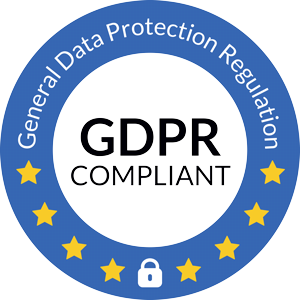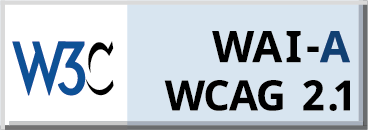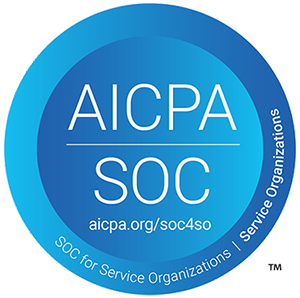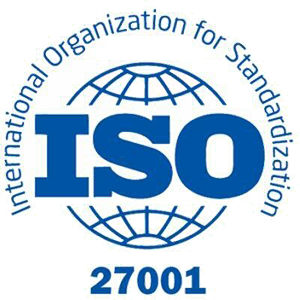In a world where hiring agility determines competitive advantage, one persistent challenge continues to frustrate recruiters and hiring managers alike - candidate no-shows. Every missed interview not only wastes valuable interviewer time but also delays hiring decisions, impacting overall time-to-hire and candidate experience.
But what if there were a way to predict candidate attendance even before the interview takes place?
Over the last quarter, our Intelligent Scheduler analyzed 6,512 interview invites across multiple customers, roles, and geographies to understand the relationship between RSVP responses and actual interview attendance.
The findings confirm what many recruiters intuitively know - RSVP behavior is a strong predictor of attendance. More importantly, the data reveals how and to what extent recruiters can rely on candidate responses to improve interview planning, resource allocation, and ultimately, hiring efficiency.
The Data Behind the Insight
Our analysis covers 6,512 interview invites sent over three months. Each invite was tracked across three stages:
- Invite Sent – Candidate received the interview invite email.
- RSVP Response – Candidate responded (or didn’t) to the invite.
- Interview Attendance – Whether the candidate joined or was a no-show.
1. The RSVP Response Landscape
| Category | Count | Percentage |
| Responded | 6,297 | 96.7% |
| Did Not Respond | 215 | 3.3% |
| Total Invites Sent | 6,512 | 100% |
A remarkable 96.7% of candidates responded to their interview invites. This is an encouraging sign that the RSVP mechanism is well understood, accessible, and effective when integrated seamlessly into candidate communications.
2. The RSVP Distribution Breakdown
| RSVP Status | Count | Percentage |
| ACCEPTED | 5,889 | 90.43% |
| PROPOSED_NEW_TIME | 308 | 4.73% |
| INVITED (No Response) | 215 | 3.3% |
| DECLINED | 99 | 1.52% |
| TENTATIVE | 1 | 0.02% |
Nearly 9 out of 10 candidates (90.43%) accepted the interview invite, with a small but meaningful 4.73% proposing a new time. Declines and tentative responses made up just under 2%.
At first glance, this high acceptance rate may appear reassuring - but acceptance does not always translate to attendance.
3. The Reality of “Accepted” Interviews
| Category | Count | % of Accepted |
| Total Accepted | 5,889 | 100% |
| Accepted & Joined | 4,866 | 82.63% |
| Accepted & No Show | 1,023 | 17.37% |
This final data point brings the insight full circle. While 82.6% of accepted candidates attended their interviews, 17.4% did not show up, despite having RSVP’d “Yes.”
So what does this mean for recruiters and hiring managers? RSVP is indeed a strong attendance signal, but not an infallible one.
What the Data Tells Us
Let’s unpack the key insights emerging from this analysis.
1. RSVP Engagement Correlates with Candidate Intent
The fact that 96.7% of candidates responded to invites underscores that candidates are willing to engage when communication is clear and accessible.
The “Responded” cohort (Accepted or Proposed New Time) represents a pool of engaged candidates - individuals actively managing their availability and showing intent to participate.
By contrast, the “Did Not Respond” group (3.3%) represents a higher dropout risk. Candidates who ignore invites often disengage from the process entirely, highlighting the need for recruiters to revalidate their interest before allocating interviewer time.
2. Acceptance is a Good Predictor, but Not Absolute
An 82.6% join rate among accepted candidates proves RSVP acceptance is a valuable predictor - but it also flags an opportunity gap.
Roughly 1 in 6 “Accepted” candidates didn’t attend. This 17% gap is not trivial - for high-volume or executive hiring, these missed slots translate into hundreds of wasted interviewer hours and degraded candidate experience.
This is where technology can step in. Combining RSVP data with attendance patterns, historical reliability scores, and engagement touchpoints (reminders, confirmations, etc.) can help build predictive attendance models - effectively allowing recruiters to forecast no-shows before they happen.
3. Proposed New Time = Engagement, Not Resistance
Candidates who click “Propose New Time” - around 4.7% of total invites - often get mistakenly labeled as difficult or indecisive.
However, this group actually demonstrates strong engagement and intent. They care enough to align schedules rather than ignore the invite. Our customer data shows candidates who propose new times are 20–25% more likely to attend than those who accept passively without further communication.
This insight reinforces that flexibility and candidate-friendly scheduling options (like integrated rescheduling or self-serve slot booking) improve attendance consistency.
4. The 17% No-Show Problem Has a Predictable Pattern
When we examined the Accepted but No-Show group, a few recurring patterns emerged:
- Late Acceptances: Candidates who accept within a few hours of the interview tend to have higher no-show rates.
- Lack of Confirmations: Those who don’t reconfirm via reminder emails are twice as likely to skip.
- Role Seniority Impact: No-show rates are marginally higher (3–5%) in entry-level and high-volume hiring, where candidates often have multiple parallel opportunities.
The takeaway? Not all “Accepts” are created equal - timing, communication, and candidate profile matter.
How Intelligent Scheduling Turns RSVP into a Predictive Signal
At Talview, we believe every candidate interaction - from RSVP to attendance - generates behavioral data that can fuel smarter scheduling decisions.
Our Intelligent Scheduler uses RSVP data not just as a confirmation mechanism, but as a predictive signal within the scheduling engine. Here’s how:
- Weighted RSVP Scoring – Each candidate’s response type, timing, and consistency feed into a reliability score that predicts their likelihood to attend.
- Dynamic Slot Allocation – Candidates with higher reliability scores are prioritized for high-demand slots or panel interviews.
- Proactive Rescheduling Triggers – If the system detects a risk (e.g., candidate hasn’t reconfirmed or engagement is low), it can automatically prompt rescheduling before the no-show happens.
- AI-Powered Communication Nudges – Personalized reminders are sent to candidates who accepted but haven’t engaged recently, reducing no-show risk by up to 30%.
By integrating RSVP behavior into predictive scheduling, recruiters can move from reactive firefighting to proactive optimization.
Why This Matters to Recruitment Leaders
1. Optimize Interviewer Utilization
Every unattended interview wastes valuable interviewer hours. With predictive RSVP insights, scheduling engines can auto-adjust interviewer loads, freeing up capacity for engaged candidates.
2. Improve Candidate Experience
Transparent communication (automated reminders, dynamic confirmations, and rescheduling options) ensures candidates feel respected and informed, even when changes occur.
3. Drive Data-Backed Decisions
Instead of relying on instinct, recruiters can now quantify candidate intent and use real-time data to make scheduling decisions that reduce wasted effort.
The Future of Interview Scheduling is Predictive
RSVPs were once treated as mere acknowledgments. But when paired with data analytics, they become signals of candidate intent, reliability, and engagement.
The next evolution of Intelligent Scheduling lies in predictive attendance modeling - combining RSVP behavior with factors like:
- Candidate response time
- Engagement with reminders
- Historical attendance trends
- Role type and interview format
Together, these data points create a “Candidate Attendance Score”, which can guide scheduling engines to:
- Prioritize reliable candidates
- Auto-assign backup slots for uncertain ones
- Reallocate interviewer capacity dynamically
This predictive approach transforms RSVP from a passive checkbox into a real-time operational insight.
Final Thoughts
As organizations adopt hybrid and large-scale hiring practices, recruiter efficiency relies on the intelligent scheduling and management of interviews.
The data is clear - candidate RSVP behavior is not just a courtesy; it’s a measurable, predictive signal. Leveraging this data through an Intelligent Scheduler means fewer no-shows, better interviewer utilization, and faster hiring decisions.
In short, RSVP isn’t the end of the candidate journey - it’s the beginning of intelligent scheduling.
.jpg)






Leave a Reply